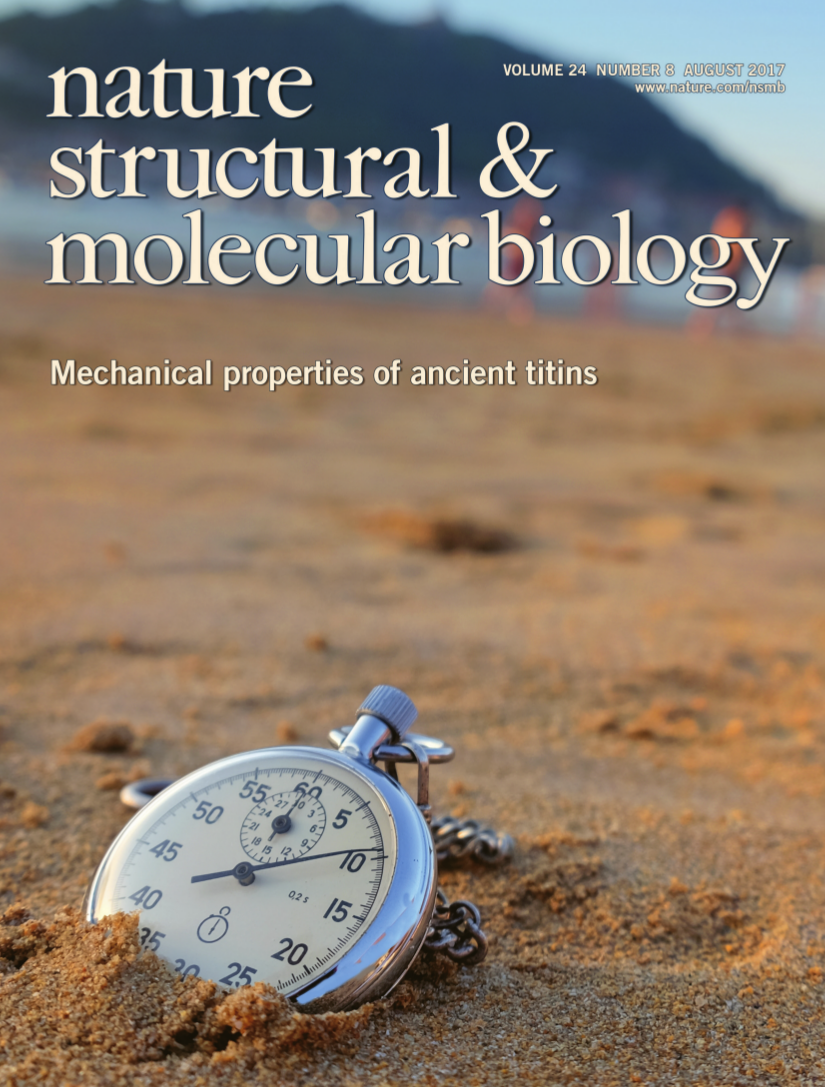San Sebastian to the NSMB cover
The Nanobiomechanics group of CIC nanoGUNE takes San Sebastian to the cover of Nature Structural and Molecular Biology. The picture introduces a research that infers the size of animals dating back 100-350 million years ago from resurrected proteins.

The cover shows the La Concha bay from Ondarreta beach. The sand, in combination with the pocket watch, represents the passage of time, in reference to the "travel in time" done by the researchers. Starting from the sequences of the titin protein of a selection of modern day animals, they inferred the phylogenetic tree of tetrapods (all animals with four limbs including mammals, birds, reptiles and amphibians), and reconstructed the sequence that this protein would have had in the common ancestors of these animal groups. After obtaining their sequences, they synthesized a part of the ancestral proteins and studied their mechanical and chemical properties in the laboratory. This has enabled them to find a link between the properties of the protein and the body mass of the animals, which they have been able to confirm in the fossil record of each epoch. The scientific journal Nature Structural & Molecular Biology published the results of the research carried out by the nanoGUNE researchers in collaboration with the CNIC.
Mechanochemical evolution of the giant muscle protein titin as inferred from resurrected proteins
A. Manteca, J. Schönfelder, A. Alonso-Caballero, M. J. Fertin, N. Barruetabeña, B. F. Faria , E. Herrero-Galán, J. Alegre-Cebollada, D. De Sancho, and R. Perez-Jimenez.
Nature Structural & Molecular Biology, July 2017. DOI: 10.1038/nsmb.3426
